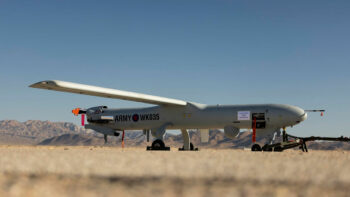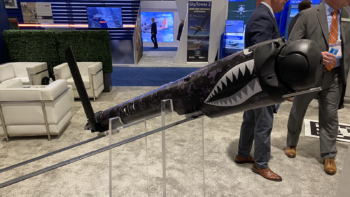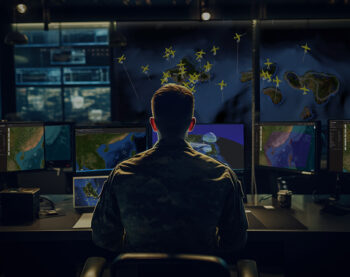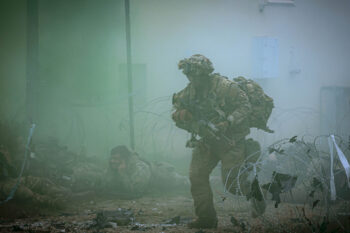 PANAMA CITY, FLORIDA: Minesweeping and “fast” are two words you’d normally be nervous about hearing in the same sentence. But as the Navy looks to new technologies to remedy its decades-long neglect of mine warfare — a favorite weapon of both Iran and China — it sees real potential to speed up a painfully slow process, without increasing risk to sailors.
PANAMA CITY, FLORIDA: Minesweeping and “fast” are two words you’d normally be nervous about hearing in the same sentence. But as the Navy looks to new technologies to remedy its decades-long neglect of mine warfare — a favorite weapon of both Iran and China — it sees real potential to speed up a painfully slow process, without increasing risk to sailors.
The Navy is taking inspiration from NASCAR mechanics shaving seconds off the time their driver spends in pit stops as it searches for improvements to unmanned systems, networks, and processes. The danger driving the Navy onward comes from a new appreciation of the strategic threat.
Traditionally, the Navy mainly thought about mine warfare in the context of clearing the way to the beach for a Marine Corps amphibious force. (In fact, both issues are the responsibility of a single section of the Chief of Naval Operation’s staff). Today it worries about Iran or other “regional powers” (code for China) shutting down strategic chokepoints like the straits of Hormuz or Malacca.
“It’s one thing if you’re clearing the minefield for the assault; there’s a lot [else] to do before you make the assault … There’s plenty of time,” Deputy Chief of Naval Operations, Vice Adm. William Burke, said at the National Defense Industrial Association’s annual expeditionary warfare conference earlier this month. But, Burke said, “if you’re clearing the minefield for oil tankers to move through to keep the world economy going, it’s a completely different story. Time is completely of the essence.”
That’s a problem, considering it took the Navy months to clear the last major minefield in the Gulf, the one the Iraqis laid in 1990-1991 to prevent a Marine landing on the coast of occupied Kuwait. Some 20 years later, the mainstay of the US Navy’s mine warfare fleet remains the Avenger-class, an eighties-vintage minesweeper with many World War II-vintage features, including a wooden hull to avoid setting off magnetically fused mines as it sails past.
“In the old days, it was limited by the speed of the mine counter-measures ship,” explained Capt. John Ailes: The Avenger would sail right into the minefield and move very, very, very cautiously through at about four knots (4.6 miles per hour). Ailes is the Navy’s Program Manager for the Littoral Combat Ship‘s “mission modules,” which include a mine warfare package now in development that will bring together a wide range of cutting-edge systems. Those systems include both remote-controlled unmanned craft — a recent innovation — and helicopter-borne counter-mine gear — a long-established Navy capability. The idea is to let the LCS “mothership” itself stay well clear of a suspected minefield and send it its robots and copters in to check things out.
That approach obviously helps keep sailors out of danger, but, less obviously, it also provides multiple opportunities to speed up the process that simply didn’t exist in the old “sail around the minefield” model. When drones and helicopters come back to the mothership, Ailes explained, it’s like a race car “pitting” during a race, where the imperative is to “minimize the time in the pit stop”: You want to get them refueled, rearmed, and back on the track, or rather in the water, as fast as possible.
“In developmental testing we instrumented every action that the sailors took, [so] we can measure where all the time is being spent,” Ailes told reporters at the NDIA conference. He likened the process to the famous “time and motion” studies done early in the 20th century by Frederick Winslow Taylor, a major inspiration for Henry Ford’s assembly line.
Traditionally, Ailes said, the Navy assessed each mine-warfare system individually, on whether it met particular performance specifications or not. For the LCS mine warfare module, however, they’ve added a new metric, “rate of sustained clearance over time,” that looks at how fast the whole array of systems, working together, can clear a minefield. So far, Ailes boasts, the LCS package now in testing works twice as fast as the traditional minesweeper, and he intends to make it three times as fast.
Some of the improvements are simple mechanical ones. This is where NASCAR comes in. Sailors now use a NASCAR-inspired gadget to automatically loosen and tighten bolts that once had to be done one-by-one by hand on the Remote Minehunting System, a semi-submersible unmanned craft also called the Remote Multi-Mission Vehicle. But the greatest saving of time, Ailes and other Navy experts say, comes when you can avoid coming back to the “mothership” at all — and that depends not on physical processes but on transmitting data.
The problem is that while drones and helicopters can carry all sorts of sensors, they can’t haul around sophisticated data-processing suites and, even more important, the teams of highly trained sailor-analysts who interpret the data.
Often it takes multiple passes by both sonar and laser sensors to decide whether a particular blip is a real mine. Especially in the cluttered waters of the Persian Gulf, a suspicious object on the seafloor may be a buried mine or it could be someone’s old refrigerator; a floating object may be a tethered mine or just a sea turtle; and with the “neutralizers” that destroy mines costing easily $80,000 apiece, it’s important to reserve them for real targets. All that eyestrain-inducing, migraine-causing data analysis takes place aboard the mothership — and currently, there’s no way to beam the data back there from the helicopters and unmanned submersibles out hunting. You have to physically pull a hard drive out of one system and plug it into the other.
“The whole UUV [unmanned underwater vehicle] comes back to the mothership, you pull the disks out, put the disks in the processing system, and you look at them,” said Lawrence Schuette, director of innovation at the Office of Naval Research. “What we’re proposing is an RF [radio frequency] link.” That way the drones can transmit their data back to the analysts without come back to the mothership for the laborious, time-consuming process of hauling the UUV back aboard (or landing the helicopter) and physically swapping the drives. The drones can keep gathering new data at the same time as the humans are analyzing the data already gathered, in parallel, instead of each process having to wait for the other in serial.
The details of ONR’s experimental solution are classified, but “Rube Goldberg would be proud,” Schuette ruefully told the conference. Does it work? “We’ll know in another year or so.”
So the Navy is looking hard at ways to increase the bandwidth to transmit data from unmanned craft and helicopters back to the LCS mothership. Navy leaders at the NDIA conference made it clear they were more than eager for fresh ideas from industry. Above all, said Capt. Frank Linkous, head of the mine-warfare section on the Chief of Naval Operations’ Pentagon staff, “where we could use your help is with over-the-horizon communications, [especially] multi-vehicle communications.”
There is no one silver bullet or panacea technology that will solve the Navy’s mine-hunting problem. The solution lies in optimizing a whole interconnected system of systems and the processes by which they work together. Historically, “we’ve been focusing on a lot of gear, a lot of stuff,” said Rear Adm. Frank Morneau, deputy director of the Navy staff’s expeditionary warfare division and a former mine-hunting diver himself. “What we haven’t been focused on is time — collapsing the time for the entire kill chain.”
Navy to sideline support ships, re-assign mariner crews amid worsening workforce shortages
Rear Adm. Philip Sobeck, commander of Military Sealift Command, said the initial plans would be executed by the end of 2026.
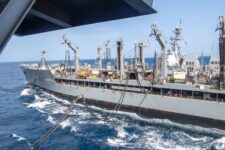
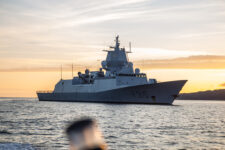





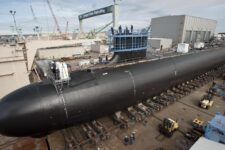
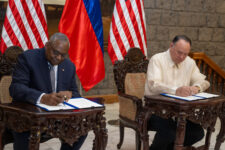

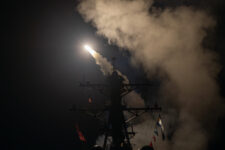

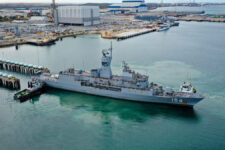



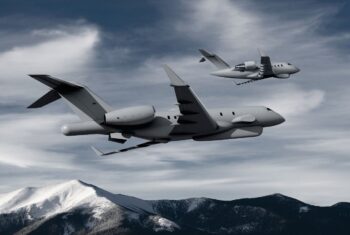
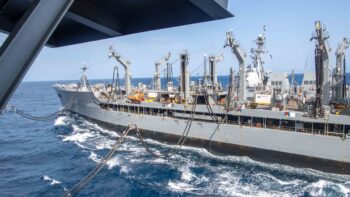



![E-2D_AR_1[1]](https://breakingdefense.com/wp-content/uploads/sites/3/2024/10/E-2D_AR_11-350x233.png)
